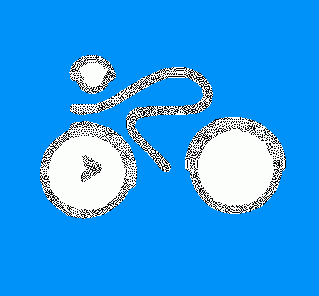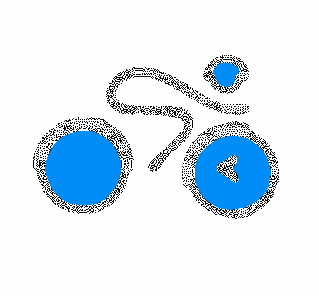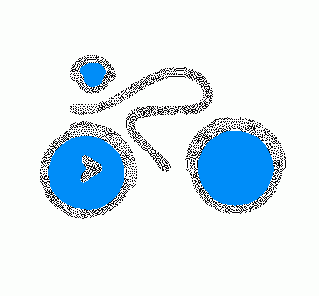| Newsletter - 2005 Archive |

|

|
Cycling Club |

|

|
| Newsletter - 2005 Archive |

|

|
Cycling Club |

|

|
Next--->
|
Lights I somehow doubt I shall have anymore use for lighting that can get me through 2 nights of riding. If I did it would need to be good enough for 78 year old eyes. It is always worth reading Cambon, if only for a good laugh. He seems to think in extremes & my experience has been with regular off-the-shelf stuff. Perhaps my standards for adequate lighting are somewhat lower than his for reasons of personal history. When I started night riding in Britain there was a war on. Can you imagine the amount of light shed on the road by a 3volt E(N)ver Ready battery lamp that had to have a louvered shield on it? In comparison to that anything is good. It didn't often happen, but over-night rides were part of a touring club's program & I think my first one was in 1944. Then in 1950 I rode my first 24 hour time trial. The Ever Ready 3 volt head lamp provided the illumination with a 1.5 volt rear light. When I rode my last "24" in 1985 the lighting among time triallists hadn't changed a bit, I still used a 3 volt Ever Ready. I went to UK that time with a Sanyo BB generator mounted on the CBS. I wondered about leaving it on, but, hey, it's a race & you don't use generators for racing. Stupid! At that time I still relied on the on/off lever mounted on the generator down below the BB. By the time I went to France in 1991 for PBP I had developed what I think is a very good combination based upon the technology available at the time. The Union 10cm diameter halogen head lamps give an excellent spread of light & I had 2 of them mounted on the front pannier lugs on the forks, one each side of course. At that time I only had 2.4 watt bulbs as the bike was wired up for 2 rear lamps. Now I use 3w bulbs as the rear lights are independent. You don't need full lighting all the time & I could use either or both lamps depending on circumstance. One lamp was powered by a BB generator, at that time only a Sanyo. In recent years I have used a Union, much better. The Sanyo was only intended to be put on once & left on. As I used barcon gear controls I had space on the down tube for a friction gear lever with which to control not only the on/off function of the generator but also the amount of pressure it exerted on the tyre. The other headlamp was connected to a 6 volt battery. Originally I was using a Yuasa gel-cell. But for PBP I decided disposable batteries were a better choice. The only problem with that was being sold some dud batteries somewhere enroute back from Brest. A piece of plastic tube with Delrin end caps sealed with o-rings contained the 4 "D" cells & was mounted on the bottle lugs under the downtube. That set up was very good & descending in the dark was fun at about 60/70kph. In UK this spring I bought one of the new Cateye Opti-Cube LED headlamps but haven't had much occasion to use it. Last month, after a Trans Canada Reunion at the Gillnetter I stayed a bit too long & got to ride home up the Pitt River Dyke in the dark. It isn't a wonderful light, but much better that previous LEDs.Its saving grace is knowing the batteries are unlikely to die on you. In the unlikely event I was going to do some serious night riding again I would use the Opti-Cube backed with the Union generator running a 3w halogen. What little friction a pressure controlled generator exerts isn't going to be noticed down hill. Uphill you are unlikely to be going fast enough to need that extra light, so you turn the generator off. Very few people use down tube gear levers these days so there is room for a generator control. The big irritation of these Cateye lamps is the design of the mounts They are intended to be on top of the handlebars. Lower is better. Down on the forks the lamps give a better spread of light along the road.
September 6, 2005 |
_